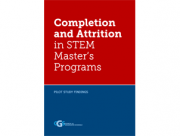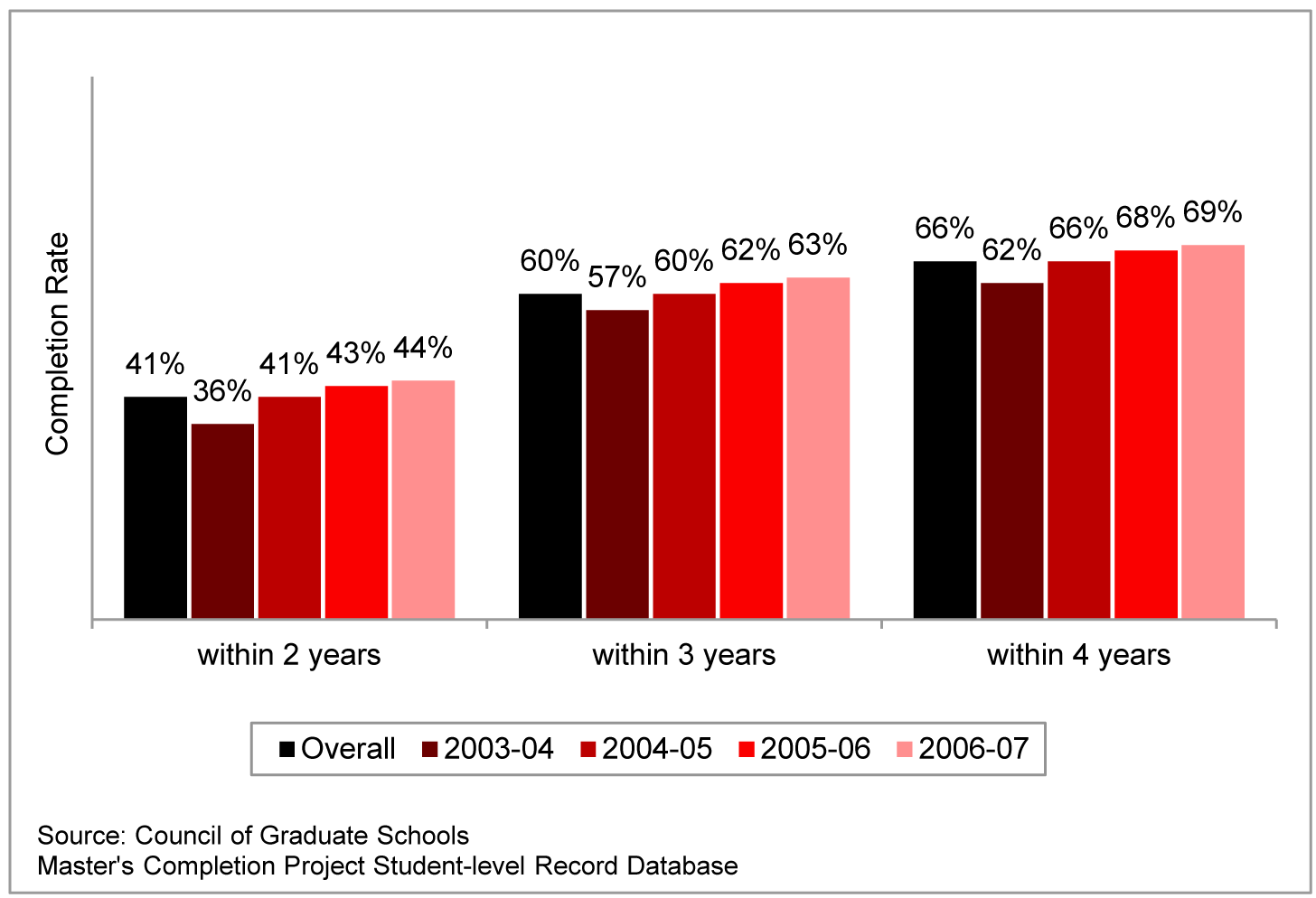You are on CGS' Legacy Site.
Thank you for visiting CGS! You are currently using CGS' legacy site, which is no longer supported. For up-to-date information, including publications purchasing and meeting information, please visit cgsnet.org.

Contact:
Julia Kent
jkent@cgs.nche.edu
(202) 223-3791
Washington, DC — The Council of Graduate Schools (CGS) today released the results of its pilot study of completion and attrition trends in master’s programs in the fields of science, technology, engineering, and mathematics (STEM). The CGS study, which was made possible by a grant from the Alfred P. Sloan Foundation, is the largest of its kind, using data from five institutions to describe completion and attrition rates in STEM master’s programs and MBA programs, and investigating the factors that contribute to the successful completion of the degree. The findings of the project are documented in a new CGS publication, Completion and Attrition in STEM Master’s Programs: Pilot Study Findings.
According to the study, 41 percent of STEM master’s students completed their program of study within two years, while 60 percent completed within three years, and 66 percent completed within four years. With respect to attrition rates, 10 percent of STEM master’s students left their program of study after six months; 17 percent left after one year; and 23 percent left after two years. The median time-to-degree for students in STEM programs was 23 months, and median time-to-attrition was eight months.
Completion rates are on the rise
Completion rates in STEM master’s programs improved gradually between the academic years of 2003-04 and 2006-07. As shown in Figure 1 below, cumulative rates of completion by individual student cohorts increased by six to eight percentage points during the period studied.
According to CGS President Debra W. Stewart, the steady climb in completion rates should be applauded by graduate education stakeholders, but she cautioned that work remains to be done. “Students are investing several years of their lives in graduate programs in order to develop their potential and become leaders in the workforce,” Stewart said. “In turn, graduate schools are making commitments to support their students with academic and career advising programs; employers are providing incentives and financial resources to develop their human capital; and family members are offering emotional support to keep their students on track throughout the rigors of graduate coursework. And yet completion rates in STEM fields, as they appear in this pilot study, are far from optimal, as compared, for example, to MBA completion rates.”
Figure 1. Cumulative Completion Rates by Student Cohort, STEM

Comparisons between STEM, MBA
STEM fields were chosen as the focus of the study due to their close association with innovation, job creation, and positive employment outcomes for degree holders. Masters of Business Administration (MBA) programs were also included in the study as a basis of comparison.
According to the study, 67 percent of MBA students completed their program after two years, compared with 41 percent of STEM students. By years three and four, STEM students continued to trail behind the MBA students, completing at the rates of 60 percent by year three (as compared to 81 percent for the MBA), and 66 percent by year four (compared to 86 percent). The median time-to-degree is almost identical for both types of programs: 23 months for STEM master’s programs and 21 months for MBA programs.
Factors contributing to completion and attrition
The most important factor identified as contributing to the successful completion of a master’s program were motivation and determination, cited by 92 percent of graduating students surveyed. Non-financial family support and pursuing graduate study full-time were tied for second at 82 percent each.
The factor most likely to lead to the inability of a student to earn a master’s degree was interference from employment, cited by 40 percent of respondents. When asked about their future plans, 62 percent of students who had stopped out or dropped out of their programs said they intended to continue working in their current jobs.
Among students who reported having concerns about their ability to complete the degree, the most frequently mentioned source of concern was finding the time required to manage school, work and family commitments. Eighteen percent of first-year students cited concerns with their school/work/life balance. With respect to employment in particular, respondents were worried about balancing work priorities with the demands of schoolwork, noting that job responsibilities received the highest priority.
About the Master’s Completion Project
CGS began an exploratory study on the topic of master’s completion and attrition in 2009 and launched the current pilot study in November 2010 with funding provided by the Alfred P. Sloan Foundation. Elizabeth Boylan, Program Director at the Alfred P. Sloan Foundation commented, “This pilot study is a milestone in understanding master’s education in STEM fields. It represents the Foundation’s commitment to assisting institutions to better understand the progress of students to their degrees, and then into the STEM workforce that is essential to America’s economic and scientific competitiveness.”
Five institutions were selected through a competitive process to participate as research partners for the study: Loyola University Chicago, Purdue University, Southern Illinois University Edwardsville, Texas A&M University, and Wright State University. For more about the Master’s Completion Project, please visit http://www.cgsnet.org/masters-completion-project.
The Council of Graduate Schools (CGS) is an organization of over 500 institutions of higher education in the United States and Canada engaged in graduate education, research, and the preparation of candidates for advanced degrees. Among U.S. institutions, CGS members award 92% of the doctoral degrees and 81% of the master’s degrees.* The organization’s mission is to improve and advance graduate education, which it accomplishes through advocacy in the federal policy arena, research, and the development and dissemination of best practices.
* Based on data from the 2011 CGS/GRE Survey of Graduate Enrollment and Degrees




